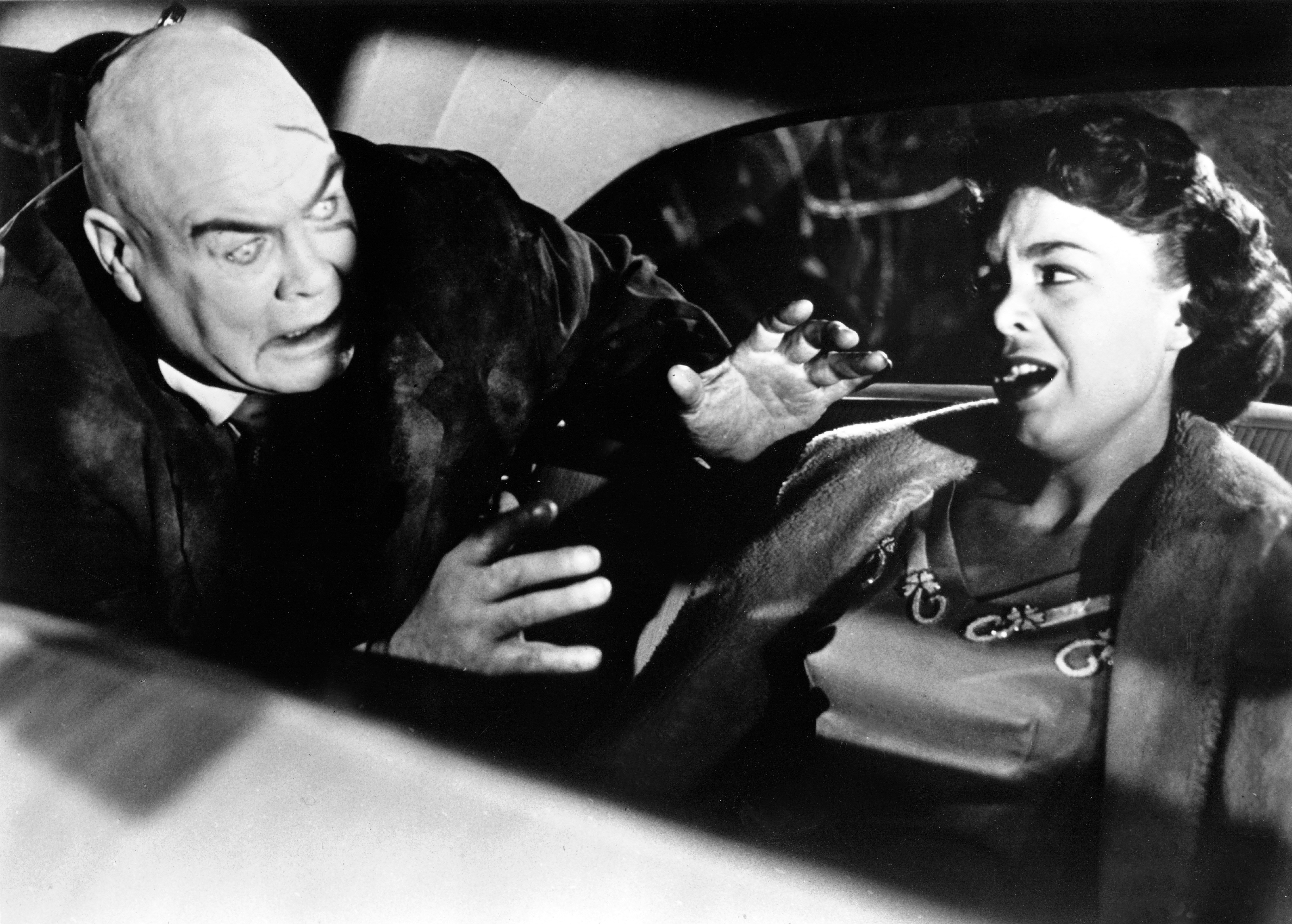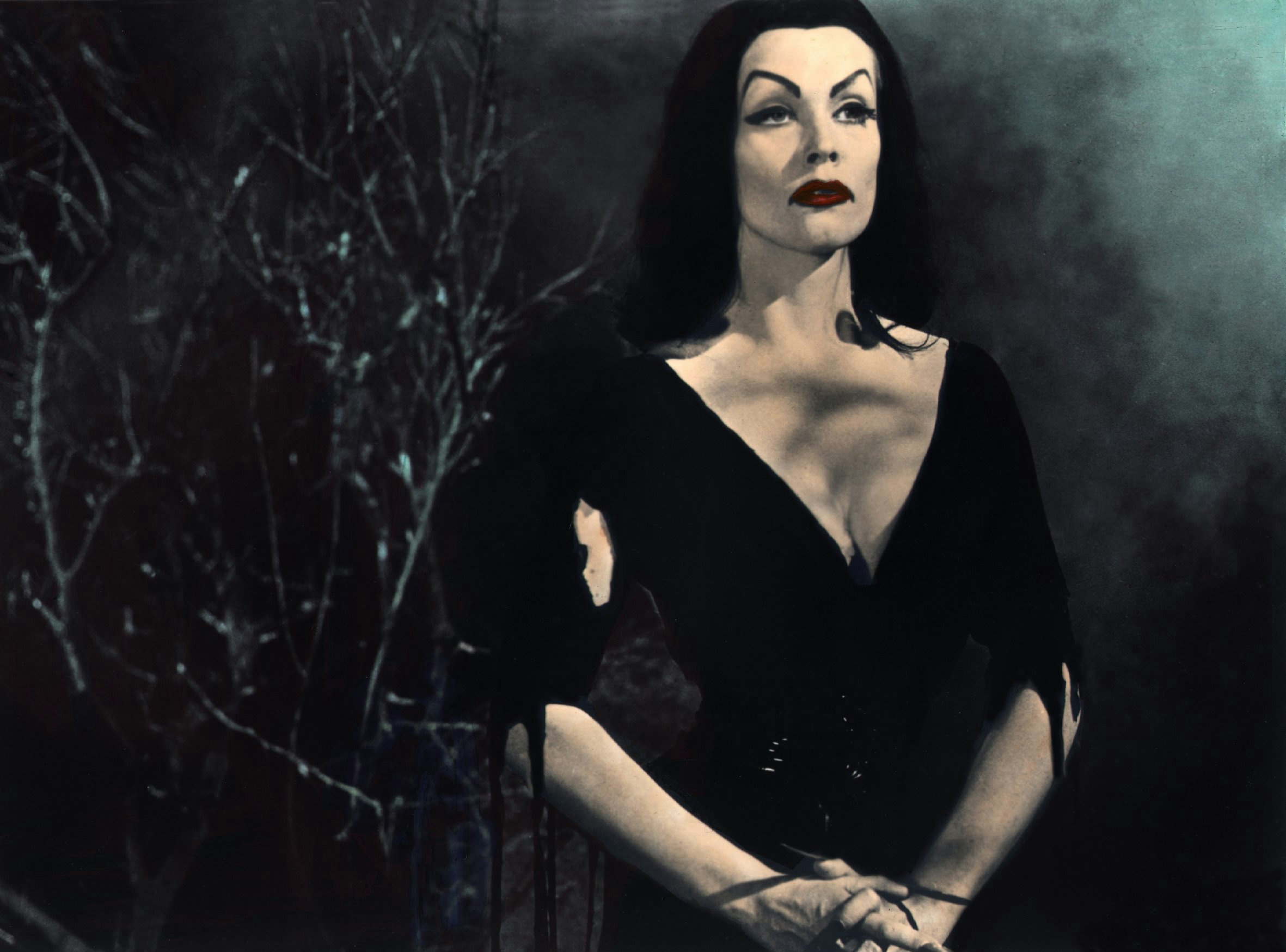
Plan 9 From Outer Space has a reputation as being one of the worst films ever made. This distinction can be traced to its inclusion in the 1980 book "The Golden Turkey Awards" by Harry Medved and Michael Medved. However, like most of the misunderstood films from singular filmmaker Edward D. Wood Jr., it is actually a low-budget wonder. Although the final product is sometimes hampered by its budget, it's hard to resist its ambitious thematic scope, peculiar vision, and melancholic charm. It's not so bad it's good. It's just good.
Filmed in 1956 under the title Grave Robbers From Outer Space, the flick's bizarre mishmash of post-atomic sci-fi and romantic gothic horror is both a testament to Wood's idiosyncratic style and also his friendship with the late horror icon Bela Lugosi. The two had met four years earlier, with Lugosi going on to work with Wood on the films Glen or Glenda (1953) and Bride of the Monster (1955). Just before Lugosi's passing in August 1956, the duo had completed scenes for a new film project entitled either The Vampire's Tomb or The Ghoul Goes West.
After Lugosi's demise, Wood abandoned the project and began developing the sci-fi script that would become Plan 9 From Outer Space. The enterprising Wood, not wanting to waste what he had already filmed with Lugosi, and also seeing an opportunity to lure actors like Gregory Walcott and Maila Nurmi (also known as Vampira) to his low budget project, incorporated the already-shot horror footage into his new sci-fi plot.
In the final film, Lugosi is introduced as a grieving old man attending the funeral of his beloved wife. The narrator tells us that while it's sundown for the day, it's also "sundown for the old man's heart." Overcome by grief, the next day the old man leaves his home and wanders into traffic, where it is implied off screen that he is slain. Once buried in the same cemetery, he joins his wife (Vampira). But instead of a peaceful afterlife, the two are raised from the dead by the titular visitors from outer space.
Any attempt to make sense out of why the now undead couple take on the outward appearance of vampires is an exercise in futility. Logic aside, there is a sweet melancholy to the way Wood turns this plot thread into a meditation on grief. In fact, much of the film explores the shadow of mortality which follows us all, especially humanity's shared mortality in a post-nuclear era.
This is achieved through the film's main plot line, which follows airline pilot Jeff Trent (Walcott) who witnesses a UFO while flying over Burbank, California. Afterwards he informs his wife Paula (Mona McKinnon) of a coverup. However, once the UFOs are spotted all across Hollywood, and as far as Washington D.C., the feds can no longer keep the visitors a secret.

From here the film hits all the plot beats you'd expect from a cheapie B-film, including shots of UFOs flying across the sky (and unlike its reputation would suggest, strings are only visible once, and even then barely), stock footage of the army shooting at them, and several scenes of the alien visitors explaining their mission.
Much like The Day the Earth Stood Still, Wood uses extraterrestrial visitors to examine the existential fears that arose after the creation of the atomic and hydrogen bombs which, like Pandora's Box, once opened, came the possibility of total annihilation. Through these visitors Wood shares a warning about what could happen should scientific innovation be used to perpetuate unchecked destruction.
In one of the film's best scenes, the visitors' leader Eros (Dudley Manlove) explains that mankind is on the verge of destroying the entire universe, reminding the Army leaders that humans are not alone in this universe and our actions have consequences beyond ourselves. While Wood's description of humans as having "ancient, juvenile brains" may sound silly, his message about mankind's inherent selfishness remains timely even today. Although we may not have destroyed the entire universe (yet), given our part in the acceleration of climate change, it seems maybe Wood wasn't that far off the mark.
The rich thematics of Wood’s film are often overshadowed by what many modern audiences view as the film's creaky form, like the narration and opening and closing sequences featuring the Amazing Criswell. A friend of Wood's, Criswell was a host of a now lost local L.A. based television show called Criswell Predicts.

In his book, Ed Wood, Mad Genius: A Critical Study of the Films, author Rob Craig suggests that these sequences would have played differently for audiences in the 1950s, who were used to the sensational and lurid style of popular tabloid newspapers like True Confessions, or even ripped-from-the-headlines police procedurals like Dragnet. That Wood used this kind of pop idiom to craft a story about mankind’s folly is yet another example of Wood’s unique sensibilities.
The film ends with a scathing criticism of our country's warhawk mentality. A melancholic Eros gazes out a window. Despondent, he sighs, "One day it could all be gone, in one big puff of smoke and ball of fire. All that out there, the stars, the planets, all just an empty void." A few minutes later the U.S. Army takes aim at their UFO, which, engulfed in flames, explodes in space. Wood leaves us with Criswell's bleak final words, "God help us... in the future."







